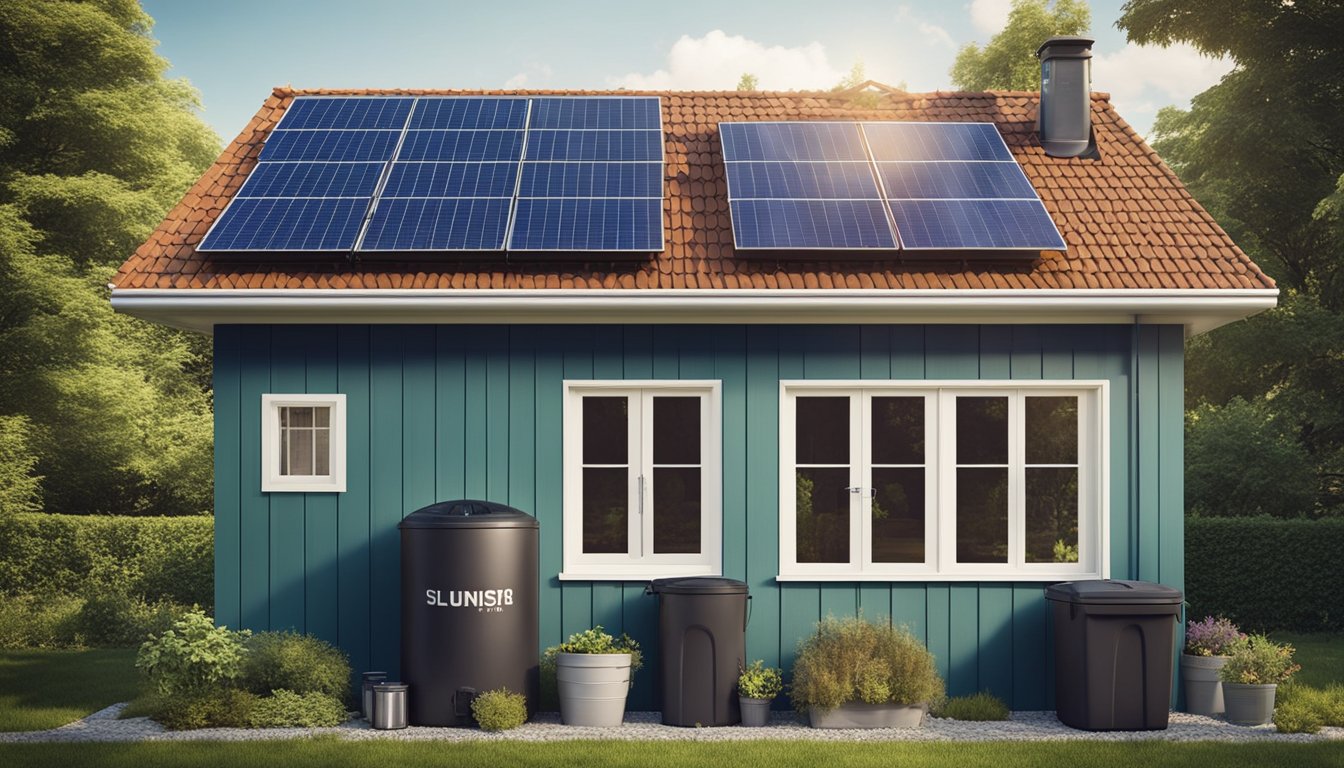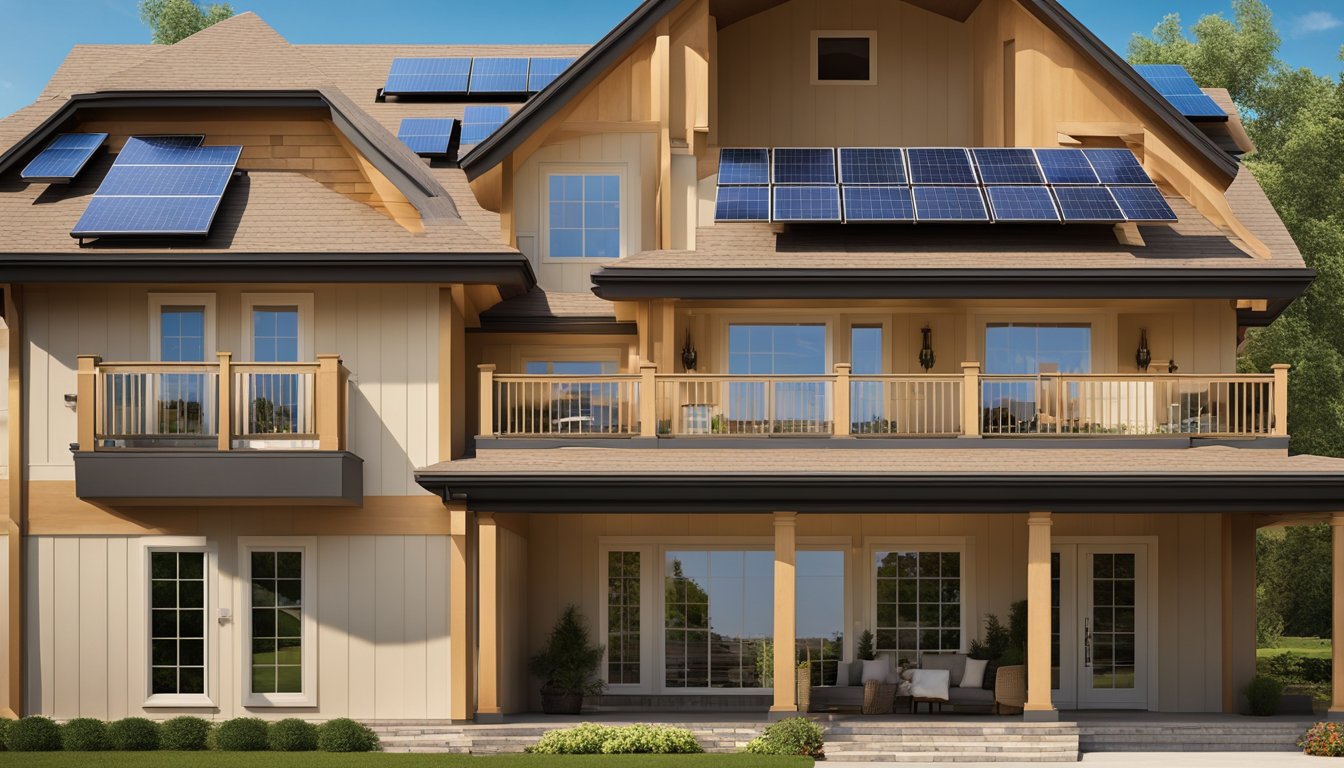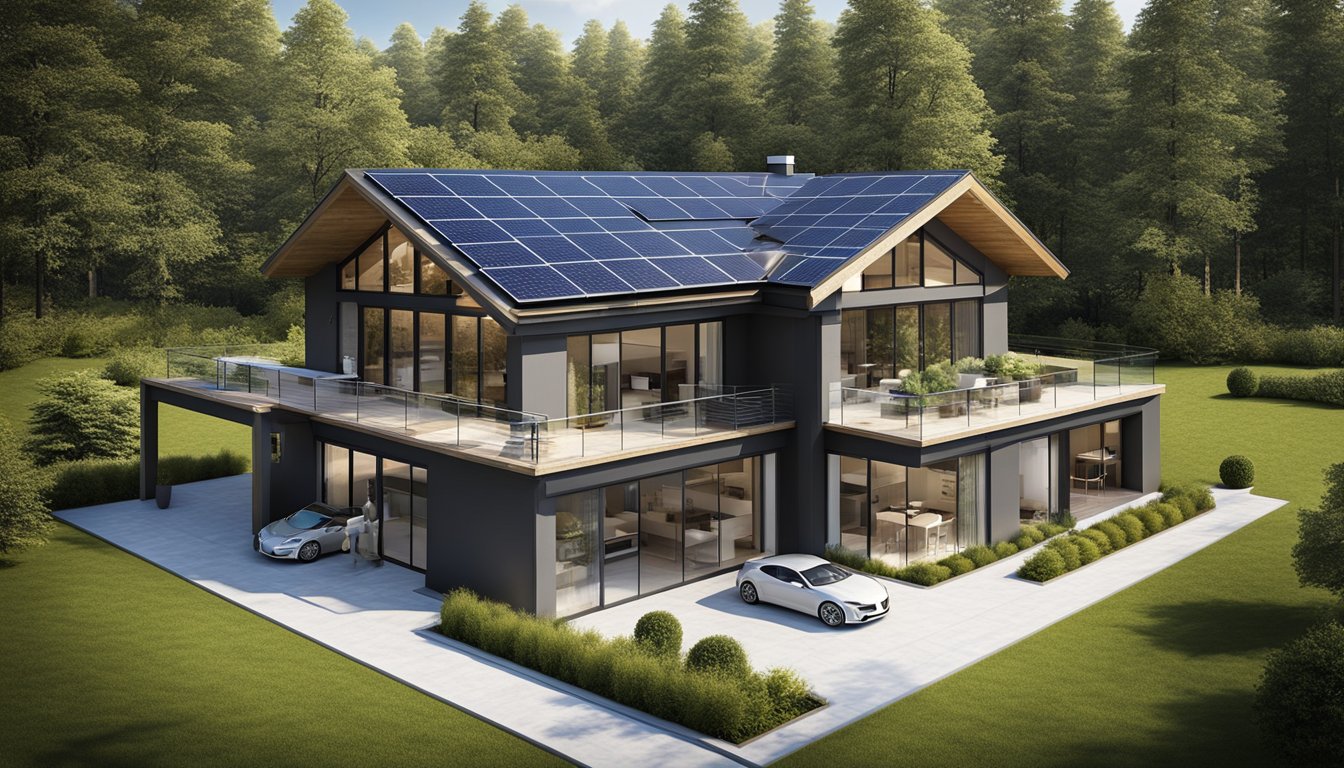Late updated: 12 Aug 2024 11:08
Written by: Daniel Harper
Energy-Efficient Home Renovation Tips for a Sustainable Future
Embarking on an energy-efficient home renovation is a pivotal step towards sustainability and reducing our carbon footprint. By integrating eco-friendly solutions, we not only diminish energy consumption but also enhance the comfort and value of our abode. Energy-efficient homes translate to significant long-term savings on utility bills, making your renovation an investment that pays off in multiple ways.

Our journey begins with a thorough assessment and meticulous planning. Identifying areas where improvements can yield the greatest energy savings is essential. From upgrading windows to utilising non-toxic materials, every change contributes to a more sustainable home environment. For instance, planting deciduous trees strategically can cool your home in summer and allow sunlight in winter, optimising natural energy flows.
Implementing these energy-efficient strategies not only benefits the environment but also enriches our daily lives. Sealing gaps, upgrading insulation, and incorporating renewable resources like solar panels are just a few tactics that can make a profound difference. Engaging in these practices underscores our commitment to eco-friendly living, ensuring that our homes are both greener and more economical.
Key Takeaways
- Energy-efficient homes bring comfort and lower utility bills.
- Assessing and planning are crucial for a successful renovation.
- Simple changes like sealing gaps and upgrading insulation matter greatly.
Assessing and Planning for Energy Efficiency
Reducing energy consumption in our homes requires thorough assessment and careful planning. This involves identifying areas where energy efficiency can be improved, selecting sustainable materials, budgeting, and exploring government incentives.
Conducting a Home Energy Audit
A home energy audit helps us pinpoint the areas where our home wastes energy. Engaging with energy experts can provide detailed insights. They may use tools such as thermal imaging cameras to detect heat loss.
We may start with simple steps like checking for drafts around windows and doors. Evaluating the insulation in our loft and walls is crucial, as inadequate insulation can lead to significant energy loss. An energy audit report will highlight the areas that need improvement and suggest cost-effective solutions.
Choosing Sustainable Materials and Technologies
Selecting sustainable materials is a cornerstone of energy-efficient renovations. We should look for materials that are non-toxic and have a low environmental impact. For example, using recycled or reclaimed wood reduces the need for new resources.
When it comes to technologies, incorporating renewable energy sources, such as solar panels or ground-source heat pumps, can significantly reduce our carbon footprint. Energy-efficient appliances, LED lighting, and water-saving fixtures are also excellent choices. We should ensure that all chosen materials and technologies meet modern building standards for eco homes.
Setting a Budget for Energy-Efficient Renovations
Budgeting is a vital aspect of planning. The initial cost of energy-efficient renovations can be high, but the long-term savings on energy bills can offset these expenses. We should prioritise investments that offer the highest energy savings to maximise cost efficiency.
We might consider creating a table to list all potential improvements alongside their costs and expected savings. This transparent approach helps us make informed financial decisions. It's also essential to allocate a contingency budget to account for any unforeseen costs.
Understanding Government Incentives
Government grants and incentives can reduce the financial burden of energy-efficient renovations. In the UK, schemes like the Green Homes Grant provide funding for insulation, low-carbon heating, and other energy-saving improvements.
We should explore available grants and eligibility requirements to make the most of these opportunities. Utilising government support not only helps reduce costs but also aligns our renovation projects with national energy-saving goals. Staying updated with changing policies ensures we access the latest support.
Ensuring that our renovation plans encompass these aspects will lead to a more energy-efficient and sustainable home.
Implementing Energy-Efficient Solutions

Designing an energy-efficient home involves upgrading insulation, installing renewable energy systems, optimising heating and cooling, and enhancing lighting and electrical appliances. These steps can significantly reduce energy consumption and environmental impact.
Upgrading Insulation and Glazing
Proper insulation is one of the most important aspects of an energy-efficient home. Effective insulation reduces heat loss in winter and keeps homes cooler in summer. Common materials include fibreglass, foam, and cellulose. Adding draught-proofing to doors and windows prevents unwanted air leaks.
Double glazing is another effective method. Insulated windows, featuring two panes of glass separated by air or gas, provide excellent thermal resistance. These windows are particularly beneficial in reducing heat loss and improving indoor comfort. Energy-efficient windows often come with coatings that reflect heat while allowing natural light to pass through.
Installing Renewable Energy Systems
Renewable energy systems such as solar panels, solar PV, and biomass boilers significantly reduce our carbon footprint. Solar panels convert sunlight into electricity, and they can be installed on rooftops or ground-mounted. For optimal energy production, panels should face south and be unobstructed by shadows.
Air source heat pumps and ground source heat pumps are also excellent choices. These systems transfer heat from outside air or ground into the home, providing a sustainable heating solution. Biomass boilers use biological material to generate heat, offering an eco-friendly alternative to fossil fuels.
Optimising Heating and Cooling
Efficient heating and cooling systems are critical for energy conservation. Underfloor heating evenly distributes warmth throughout the home, reducing reliance on traditional radiators. Combining this with a smart thermostat allows for precise temperature control, ensuring that energy is not wasted.
Advanced systems like air source heat pumps provide both heating and cooling by transferring heat between the indoors and outdoors. Ground source heat pumps are highly efficient for heating, using the stable underground temperature as a reservoir. These systems are particularly effective in regions with extreme temperatures.
Enhancing Lighting and Electrical Appliances
Switching to energy-efficient appliances can dramatically lower electricity usage. LED bulbs consume significantly less energy than traditional incandescent or CFL bulbs. They also have a longer lifespan, reducing replacement frequency.
Smart lighting systems give us control over lighting schedules and intensity, further conserving energy. Upgrade to energy-efficient appliances like refrigerators, washing machines, and dishwashers to cut down on energy consumption. Look for appliances with high energy ratings and consider units with smart features for better control and efficiency.
By integrating these energy-efficient solutions, we can significantly reduce our energy consumption and contribute to a more sustainable future.
Frequently Asked Questions

Our guide provides valuable insights into enhancing energy efficiency through practical steps and smart investments. Let's address some common questions surrounding this topic.
What are the top ways to enhance energy efficiency in an existing home?
Sealing air leaks and adding insulation are critical to improving energy efficiency. Properly sealed ducts and upgraded windows can also make a significant difference. Additionally, using energy-efficient appliances and lighting contributes to lower energy consumption.
How can one retrofit an older house to be more energy efficient?
Older houses can benefit from comprehensive energy audits to identify inefficiencies. Upgrading insulation, installing new windows, and replacing outdated heating systems with energy-efficient alternatives are effective strategies. Adding smart thermostats can further improve energy management.
What strategies can be employed to maximise heating efficiency in residential properties?
Using programmable thermostats helps maintain optimal temperatures without wasting energy. Regular maintenance of heating systems ensures they operate efficiently. Implementing zone heating allows homeowners to heat only the areas in use, reducing unnecessary energy expenditure.
In terms of design, what features contribute to a highly energy-efficient house?
Incorporating natural light through well-placed windows reduces reliance on artificial lighting. Using thermal mass materials like concrete and stone helps maintain temperature stability. Designing homes with proper ventilation and energy-efficient roofs also contributes to overall energy efficiency.
What financial support options are available for implementing energy-saving improvements at home?
Many governments offer tax credits and rebates for energy-efficient home improvements. For example, the Energy Efficient Home Improvement Credit provides significant financial incentives. Additionally, various grants and low-interest loans may be available to assist homeowners in making these upgrades.
What steps can homeowners take to significantly decrease household energy consumption?
Using energy-efficient appliances and light bulbs is a practical approach. Employing smart power strips can eliminate phantom loads. Encouraging habits like turning off lights and electronics when not in use further helps reduce energy consumption and lower utility bills.
